
List of Past Participle Grammar Syntax
The past simple and the past participle of see. Conjugation of the verb see: Base Form/Infinitive without 'to': see. Past Simple: saw. Past Partciple: seen. Present Partciple: seeing. Third Person Singular: sees. Definition: 1. To perceive with the eyes. 2. To understand something. Example(s): 1. I saw the murderer running.
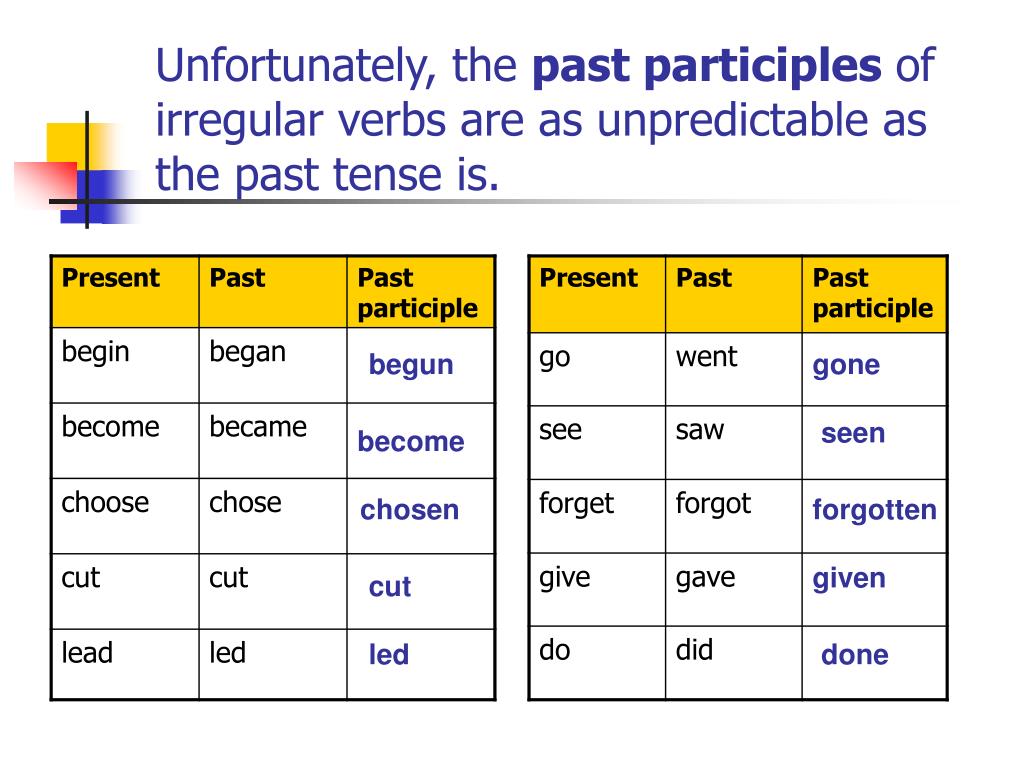
past participle tense 用法 Shophann
Conjugate the verb see in all tenses: present, past, participle, present perfect, gerund, etc.
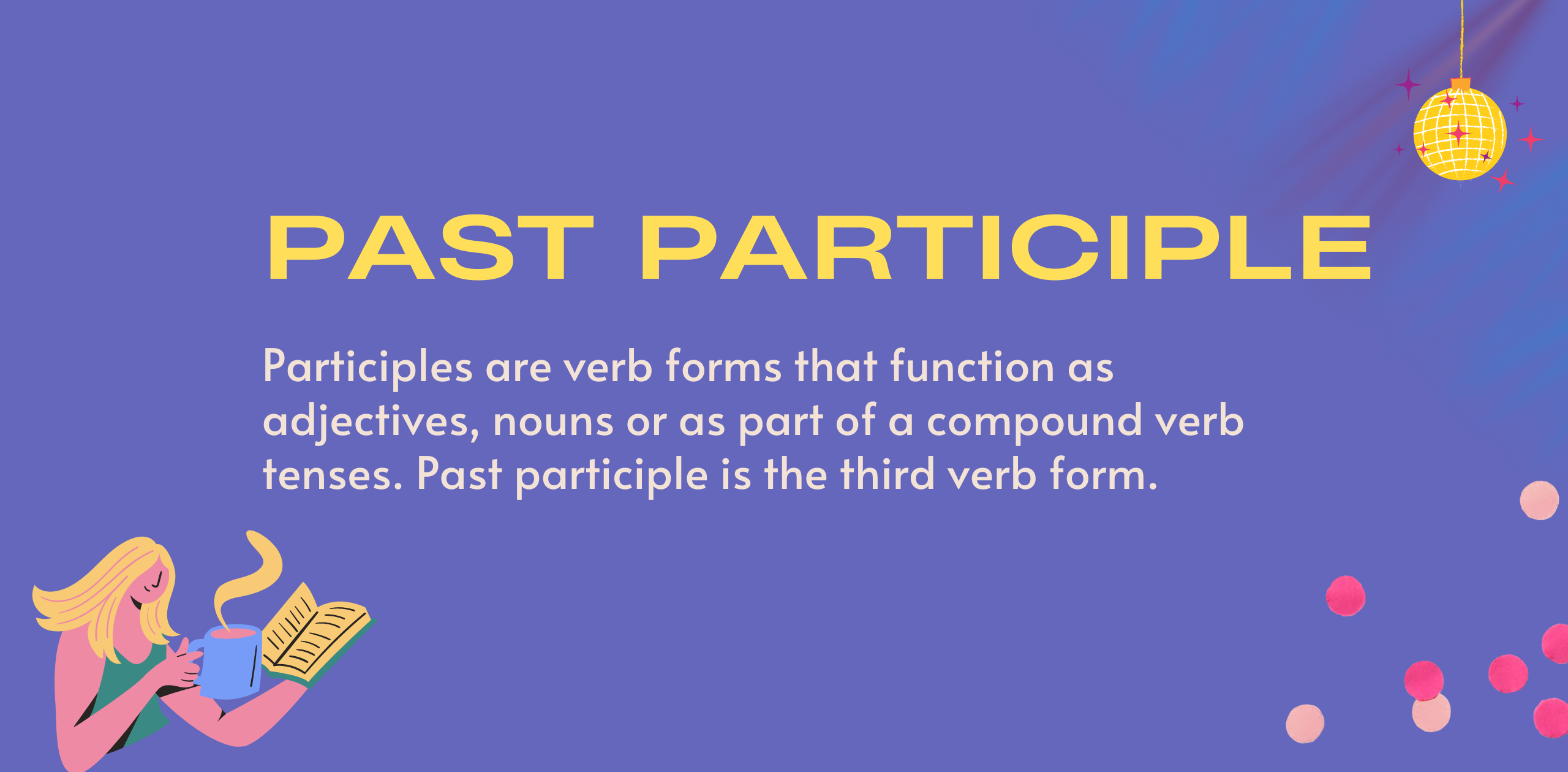
Past Participle in English Regular and Irregular Verbs Langster
past participle of see SMART Vocabulary: related words and phrases Using the eyes accommodate accommodation all eyes are on someone/something idiom astigmatic beholder cast chart corner discern fix glare have a butcher's idiom penetrating re-see re-sight rest on someone/something resurvey rubbernecking sighting tab See more results »

Festzug Optional passen ring v2 anlocken Vorteil Gürtel
Conjugation verb see X English Models British vs. American English Auxiliaries, modals Irregular verbs see Infinitive to see Preterite saw Past participle seen Model : see Auxiliary : have, be Other forms: see oneself / not see Contractions Advertising Indicative Present I see you see he/she/it sees we see you see they see Preterite I saw you saw
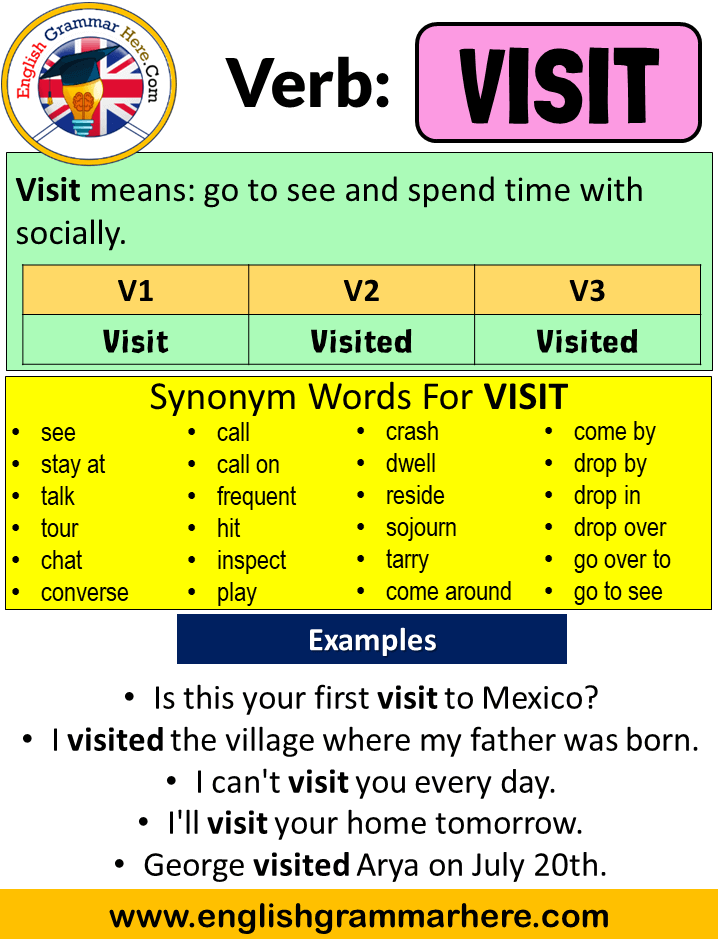
Understand Past Simple Simple Past Tense Of Understand Past Vrogue
past participle of see More from Merriam-Webster on seen Thesaurus: All synonyms and antonyms for seen Nglish: Translation of seen for Spanish Speakers Britannica English: Translation of seen for Arabic Speakers Love words? Need even more definitions?
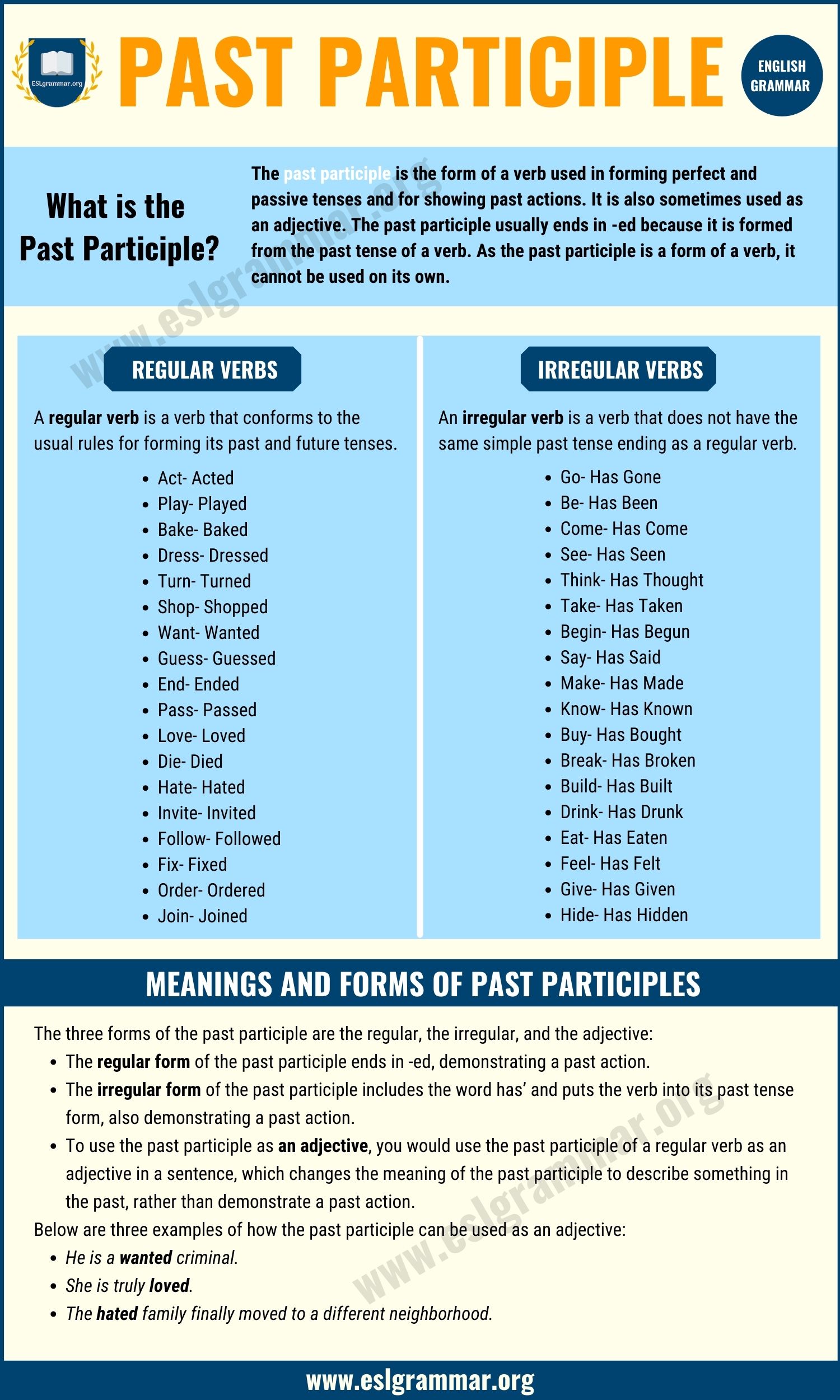
Present Participle Meaning soakploaty
The English verb 'see' is pronounced as [si:]. Related to: irregular verbs. 3 forms of verb see: Infinitive (see), Past Simple - (saw), Past Participle - (seen).. Here are the past tense forms of the verb see. 👉 Forms of verb see in future and past simple and past participle. What is the past tense of see.

Present Participle Definition and Useful Examples of Present
⚡ Conjugation of the English irregular verb, past tense : 茶 see saw seen - LEARN IV.com Learniv.com > en. The past participle is one of the most important parts of English grammar. It's used to express perfect tenses and to form the passive voice. It's also a useful tool for writing sentences that describe actions that started in the.

What Is A Past Participle?
1. I her yesterday. 2. I am the doctor at 1 o'clock. 3. Nowadays, Jack his uncles every weekend. 4. We have the light! "To See" in All the Tenses The tables below show how "see" conjugates in the past, present, and future tenses. Past Tenses Present Tenses Future Tenses Most Common Irregular Verbs

Verbs in past participle questions & answers for quizzes and worksheets
A participle is a form of a verb used as either an adjective ("the hidden treasure") or a part of certain tenses ("we are hiding the treasure"). Participles have two different types, the present participle and past participle, and participles used as adjectives can form a longer participle phrase (" Hidden in the bushes, the treasure was hard to see").
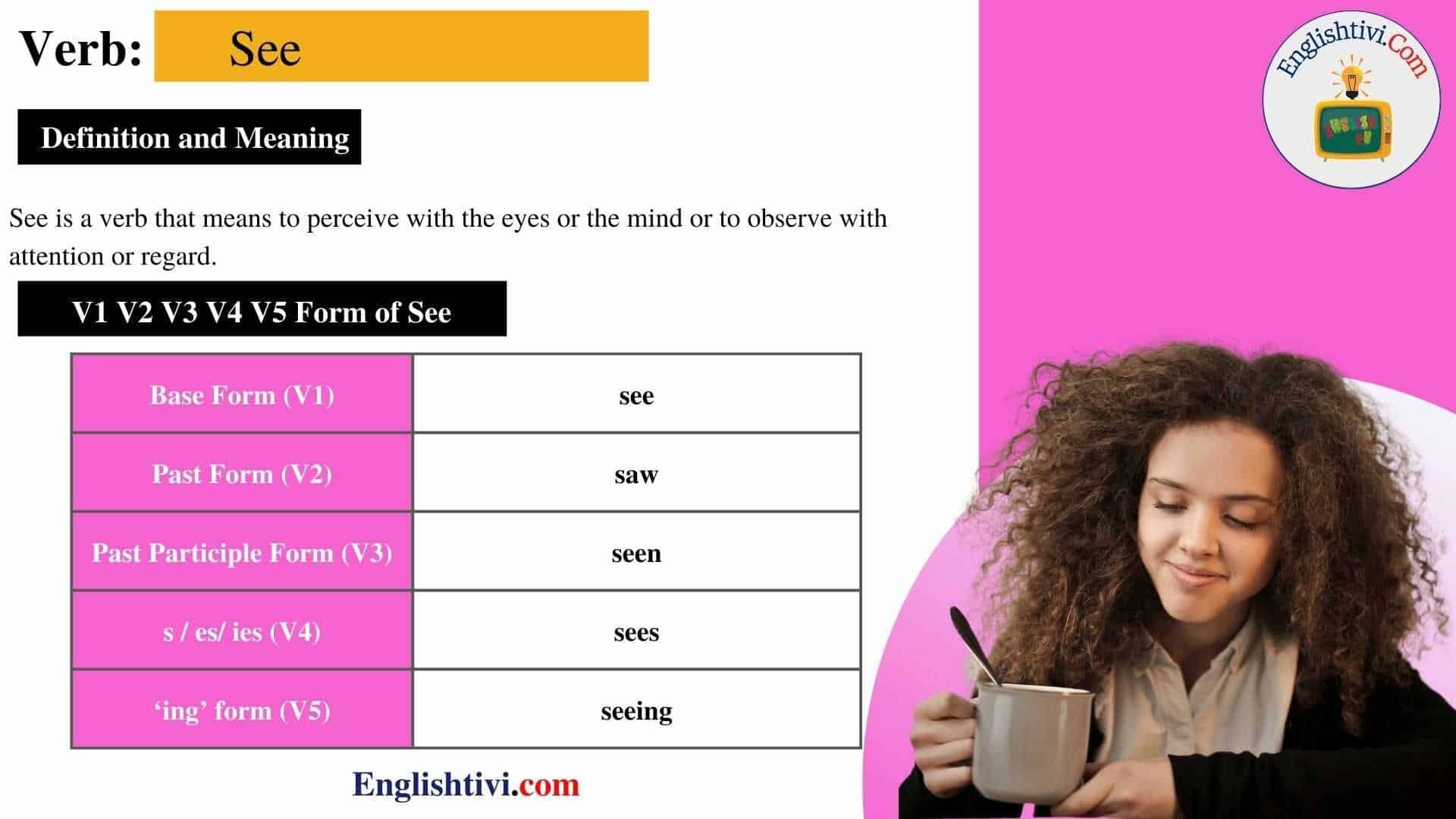
See V1 V2 V3 V4 V5 Base Form, Past Simple, Past Participle Form of See
Past Continuous Tense He/She/It was seeing. I was seeing. You/We/They were seeing. Past Perfect Tense He/She/It had seen. I had seen. You/We/They had seen. Past Perfect Continuous Tense He/She/It had been seeing. I had been seeing. You/We/They had been seeing. Simple Future Tense He/She/It will/shall see.

Review Past Participle of Irregula… English ESL powerpoints
Past participle of see. Past participle . seen [siːn] You are look at the page for irregular verb see. Participle of the irregular verb [see] The past participle is one of the most important parts of English grammar. It's used to express perfect tenses and to form the passive voice.

50 examples of present tense past tense and past participle V1, V2 and
More verb past tense. Seek. Sell. Send. Sew. Shake. Saw is the past tense of the word see. Seen is the past participle of the word see. see past form, verb forms, v1v2v3, Infinitive.
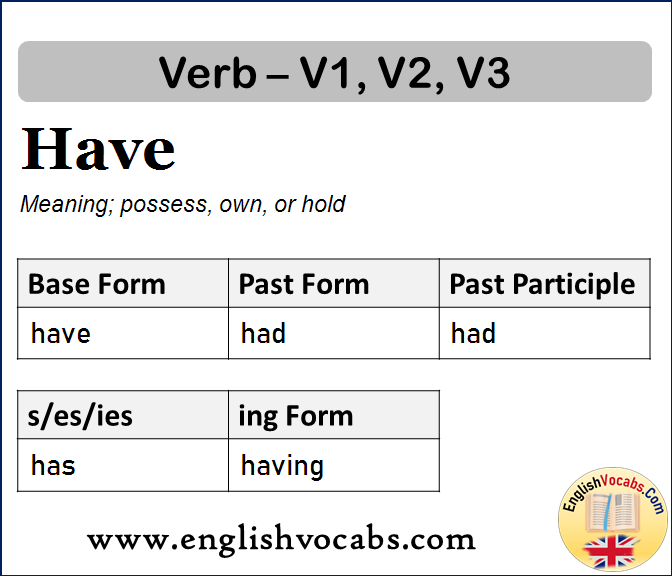
Have Past Simple, Past Participle, V1 V2 V3 Form of Have English Vocabs
Past Participle seen Present Participle seeing Present I see you see he/she/it sees we see you see they see Present Continuous I am seeing you are seeing he/she/it is seeing we are seeing you are seeing they are seeing Present Perfect I have seen you have seen he/she/it has seen we have seen you have seen they have seen Present Perfect Continuous
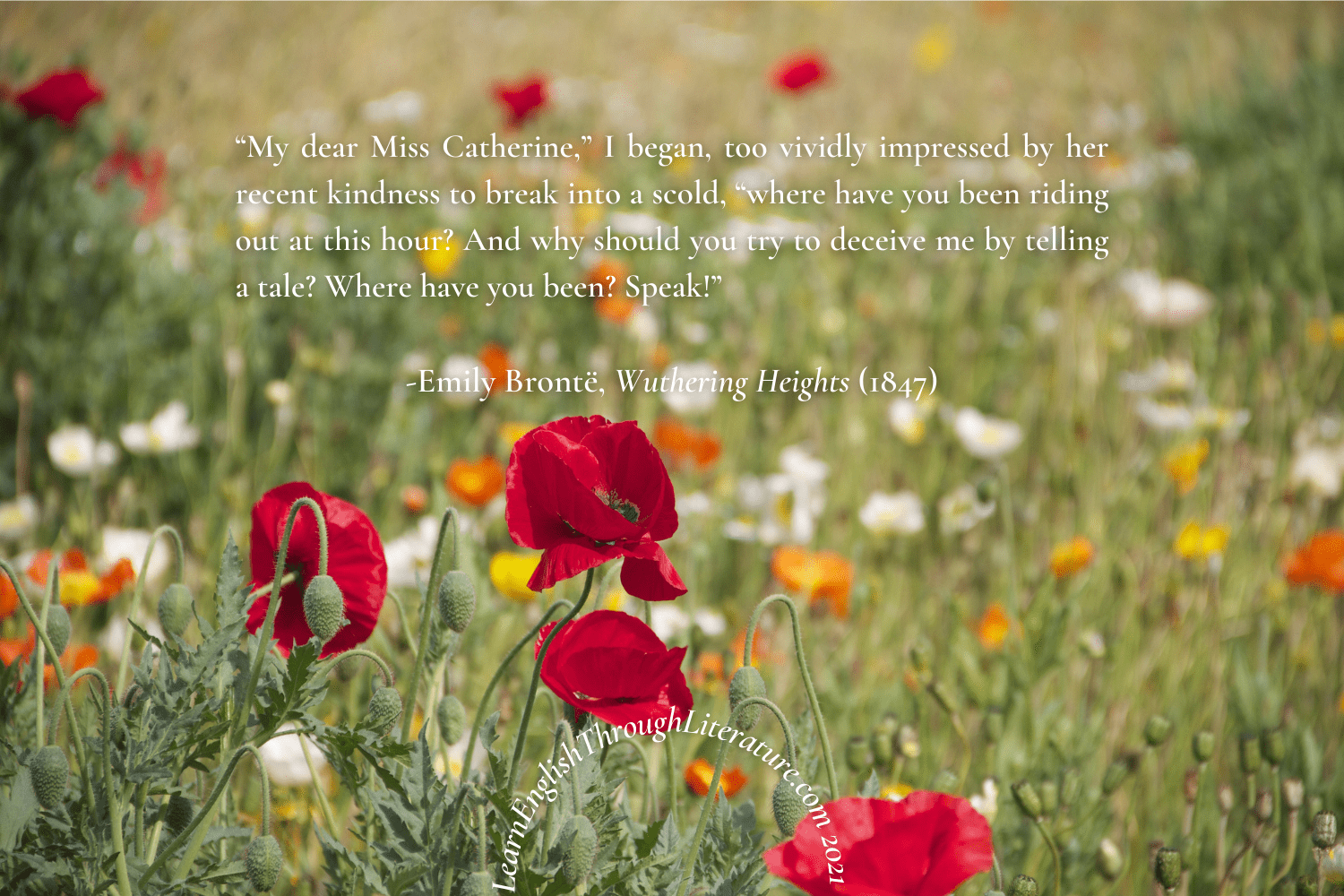
Lesson 236 Three Ways To Use ‘Been’, The Past Participle Of ‘To Be
Saw is the past tense form, as in I saw him yesterday. Seen is the past participle form and is used to form the perfect verb tenses, as in She has seen every movie in the series (present perfect tense) and She had seen every movie in the series until this one (past perfect tense).
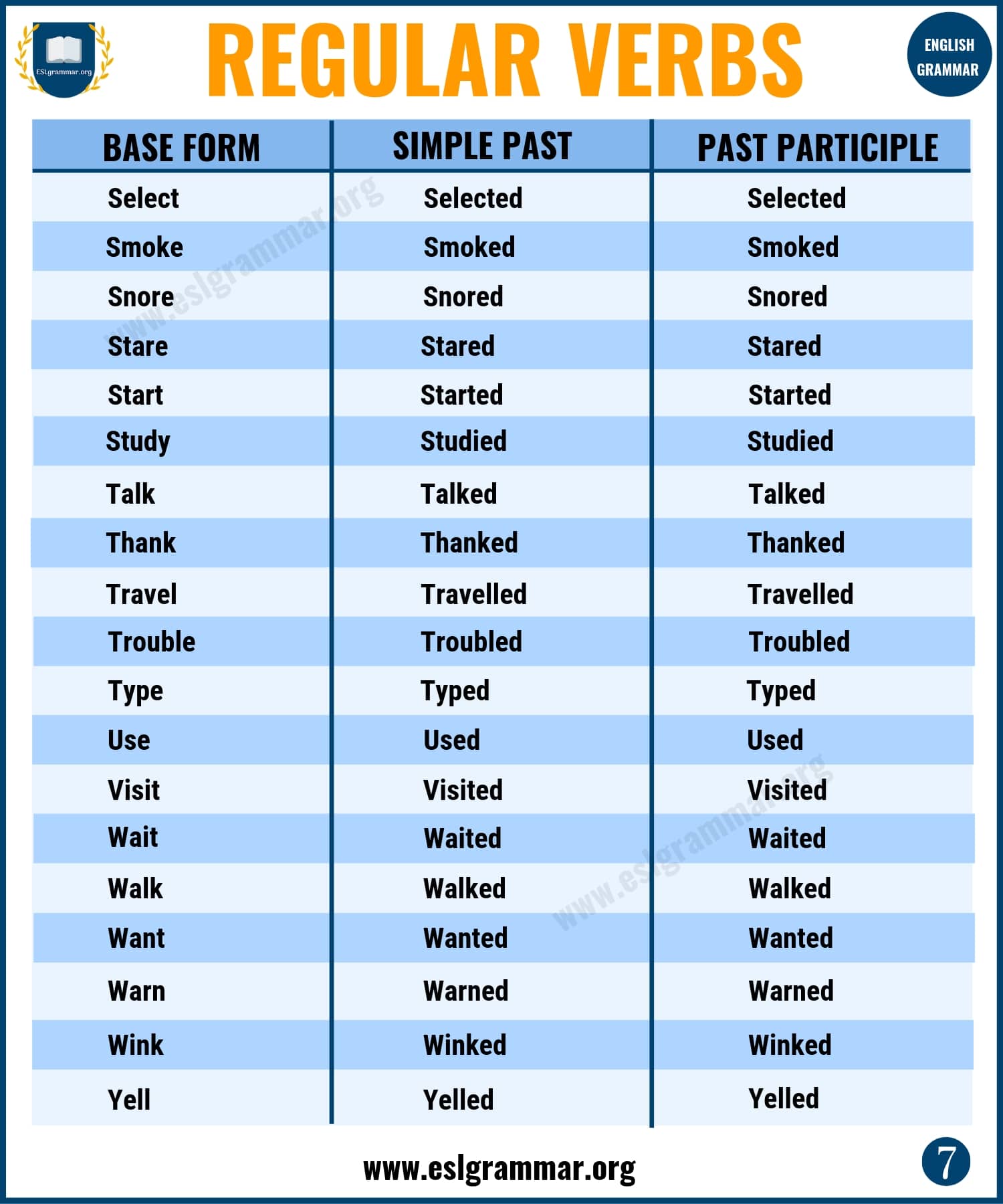
VERBS SIMPLE PAST AND PAST PARTICIPLE English Quizizz
What is the past tense of the word "see" The past tense (past participle) form of "see" is "saw." The infinitive of the word form is "see." The present participle form is "seeing." The past tense form is "saw" and past participle form is "seen." Understanding verb tenses The general grammar rules that govern past tenses are as follows.

Verbo to see conjugación en presente, pasado y past participle
Table of irregular verbs - English Grammar Today - a reference to written and spoken English grammar and usage - Cambridge Dictionary